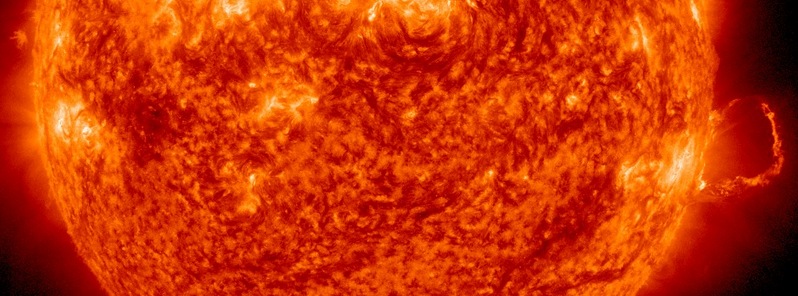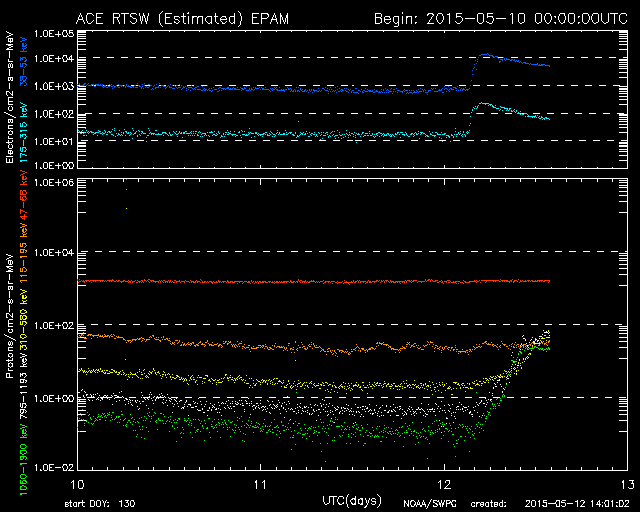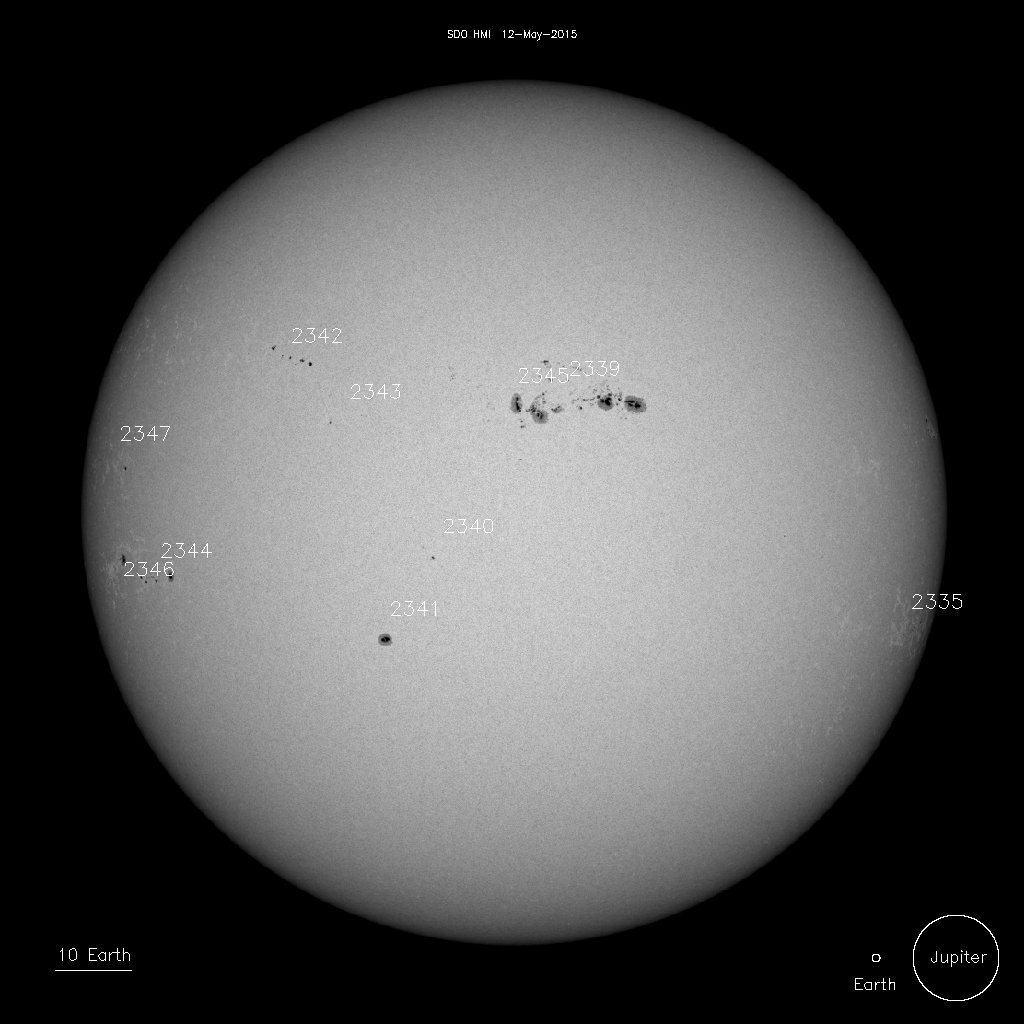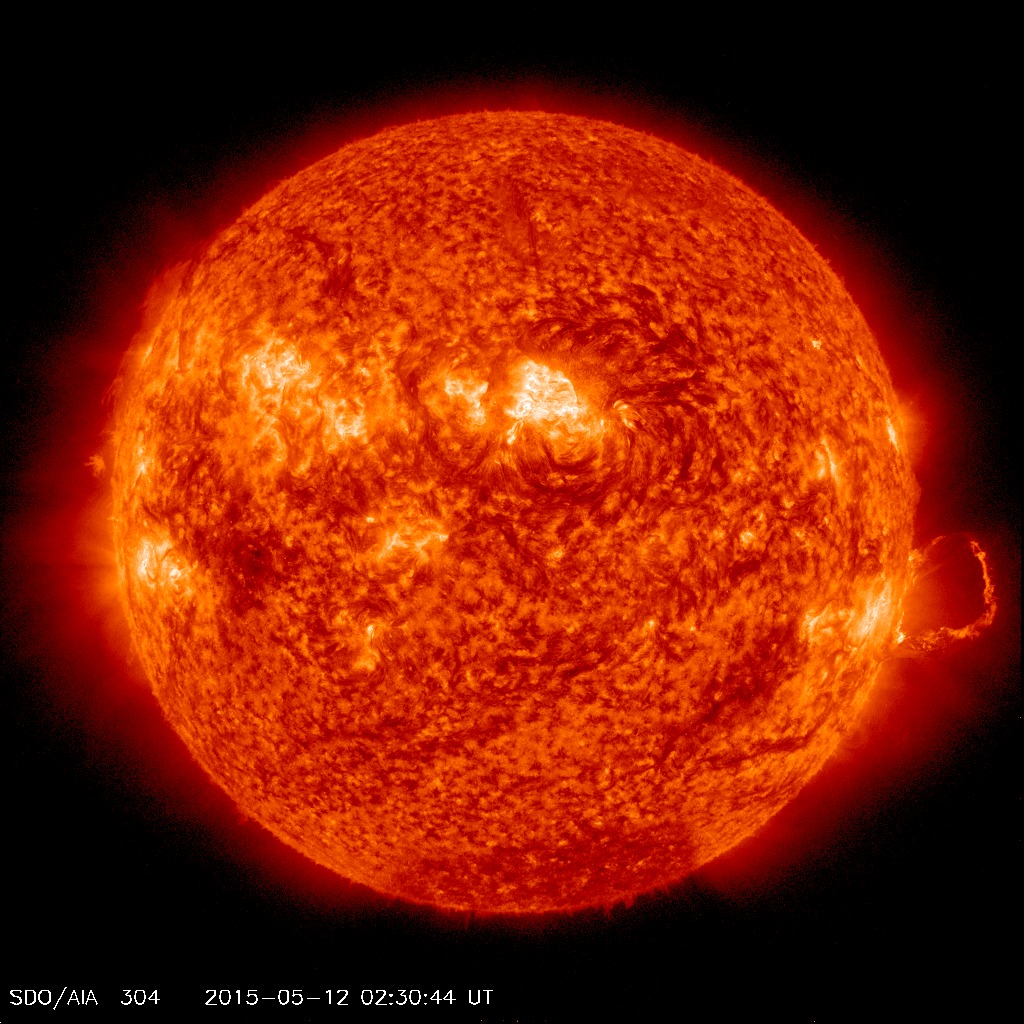Filament eruption produces CME off the west limb, proton spike

A solar filament/prominence was observed leaving the west limb of the Sun around 02:20 UTC today resulting in a Coronal Mass Ejection (CME).
Although this CME has a trajectory which is away from the Sun – Earth line, and despite its relatively slow velocity, there was an associated enhancement observed in the >10 MeV proton flux at the GOES spacecraft near Earth, SWPC said.
Flux at GOES reached a peak of 6 pfu at 07:20 UTC. Upstream at the ACE spacecraft, a maximum of 8 pfu was recorded by the SIS instrument at 08:55 UTC.

The uptick in proton flux prompted a warning at 06:27 UTC which was later canceled.
While this was an interesting event to observe, the peak flux fell below threshold for an S1 – Minor solar radiation storm and no alerts were necessary, SWPC explained.

Video courtesy of SolarHam using NASA/ESA imagery.
Solar activity is expected to be low with a chance for M-class (R1-R2/Minor-Moderate) flare activity over the next three days (May 12 – 14) with Region 2339 being the most likely source.


Sunspots on May 12, 2015. Image credit: NASA SDO/HMI.
2335 – Beta
2339 – Beta-Gamma
2340 – Alpha
2341 – Alpha
2342 – Beta-Gamma
2343 – Beta
2344 – Beta
2345 – Alpha
2346 – Alpha
2347 – Alpha
The greater than 2 MeV electron flux at geosynchronous orbit is expected to persist at normal levels over the next three days. There is a chance the greater than 10 MeV proton flux at geosynchronous orbit will exceed the 10 pfu threshold (S1 – Minor) on May 12.
The solar wind environment at the ACE spacecraft is expected to become enhanced beginning on May 12 through May 14 due to the onset of a co-rotating interaction region (CIR) followed by the influence of a negative polarity coronal hole high speed stream (CH
HSS).
The geomagnetic field is expected to be at unsettled to minor (G1-Minor) conditions on May 12 with the onset of a coronal hole high speed stream. Unsettled to minor (G1-Minor) conditions are expected to continue through May 13 as the high speed stream persists.
On May 14, the high speed stream is expected to begin to taper off bringing geomagnetic conditions below minor (G1-Minor) thresholds.
Solar filaments


Solar filament eruption/prominence on May 12, 2015. Image credit: NASA SDO/AIA 304.
Solar filaments are large regions of very dense, cool gas, held in place by magnetic fields. They usually appear long and thin above the chromosphere, and because they are cooler than their surroundings they appear dark.
Solar prominence is also a solar filament, but one that appears on the "edge" of the Sun. This makes them brighter than the dark outer space behind them.
Featured image: Prominence observed off the west limb on May 12, 2015. Image credit: NASA SDO/AIA 304.

Commenting rules and guidelines
We value the thoughts and opinions of our readers and welcome healthy discussions on our website. In order to maintain a respectful and positive community, we ask that all commenters follow these rules.